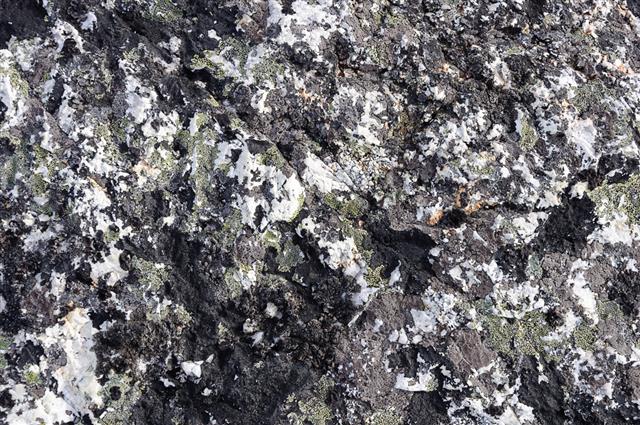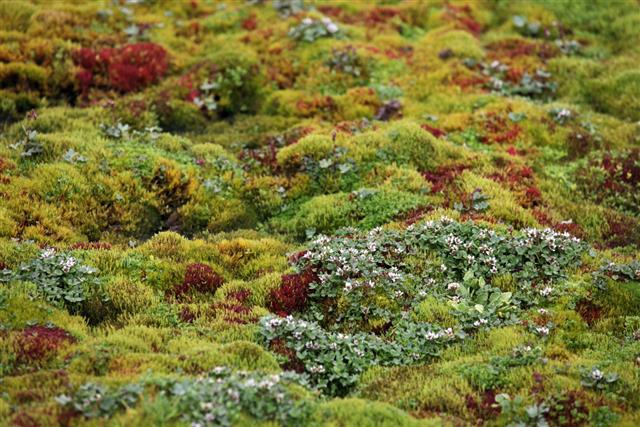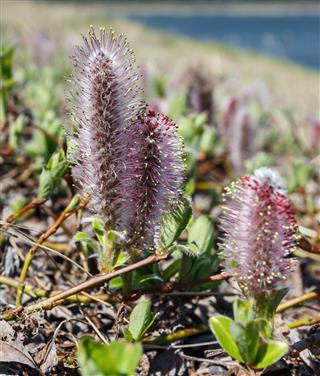
Signature plants of the tundra biome are mosses, lichens, algae, grasses and small shrubs amongst others. Some interesting tundra plant facts about adaptations to the extreme cold climatic conditions are highlighted in this article.
The tundra biome is located in the Arctic, Antarctic and Alpine regions. It is differentiated from the other biomes by extreme cold climatic conditions, continuous snow fall, less precipitation and short summers. Needless to mention, the temperature goes below freezing point, about -25° C in winter months. In summer, average temperature recorded is 10° C. Believe it or not, summer season or precisely the growing season for tundra plants hardly last for eight weeks. To cope up with these extreme conditions, tundra plants and animals exhibit certain adaptations.
Tundra Plant Life
In total, approximately 1,700 plant species are identified from the tundra biome. Of these, some flowering plants bloom in summer, and the flowering period lasts till end of summer. The ‘tundra’ is defined as a geographic area, where growth of trees is limited due to short growing duration and prevailing cold climate. In addition to little sunlight, the tundra region remains dry (about 30 cm rainfall per year) and soil lacks nutrients. In short, plants are deprived of some of the most essential growth factors. Thus, the plant life in the tundra is threatened.
Listed below are the plant species that are found predominantly in the tundra biome.
- Arctic moss
- Caribou moss
- Terrestrial algae
- Crustose lichen
- Foliose lichen
- Labrador tea
- Tufted saxifrage
- Cotton grass
- Arctic dryad
- Arctic willow
- Diamond-leaf willow
- Arctic poppy
- Rhododendron
- Pasque flower
- Bearberry
- Birches
Tundra Plant Facts and Information
It is the tundra plant adaptations that help it grow in the least hospitable areas. Since regular plants require sunlight, humidity, water, fertile soil and many other conditions for optimal growth, it is understandable that plants found in the tundra have some interesting features in them. Let’s discuss some tundra plant facts and how plants in the tundra biome survive to the harsh cold environment with less precipitation and limited sunlight.
- Majority of the tundra plants comprise mosses, lichens, grasses, sedges, shrubs and other small plants. The dominant plant forms grow as ground cover, which help them in reducing exposure to heavy snowfall and strong winds.
- The tundra plants grow together and form a colony in a specific growing area. This helps them in fighting the extreme low temperature and constant snow fall.
- As expected, active growth of tundra plants occur in the summer months. Till then, they remain dormant to preserve maximum moisture and nutrients. Some plant species exhibit pubescence that aid in heat conservation during winter.
- During the dormant period, the arctic moss collects and stores nutrients for leaf development in the spring season. It adheres to the ground and below water, as a means to protect itself from the harsh and dry winds of the tundra biome.
- Another adaptation of the arctic moss is, it’s very slow growth rate, increasing height by about 1 cm per year. Thus, nutrient requirement is greatly reduced. It survives for a long period which is not expected for a bryophyte, about 7 – 9 years.
- Mosses that cover the ground favor the growth of other tundra plants. In the same way, lichen and grasses offer a protective covering for growth of other plants. With the exception of dwarf birches in lowlands, no tree species grow in the tundra biome.
- One interesting tundra plant fact is its ability to harvest more light and heat in summer. Some plant species (example, dark red plants) have red foliage for the purpose of absorbing atmospheric heat as much as possible.
The biodiversity of the tundra biome is lowest of all the remaining biomes of the world. But, it is expectable for tundra, where 75 percent of the area is covered by permafrost. On top of this, the plants, animals and other inhabitants of the tundra biome are constantly exposed to certain threats, which may be in the form of global warming, environmental pollution and industrial activities. Also, this region is explored for oil mining projects, thus leading to further reduction in plant population.












